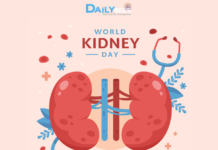Abnormal weather changes in the year 2023 are causing significant health complications worldwide. These rapidly changing weather conditions necessitate proactive healthcare measures, while also highlighting the importance of early detection by individuals.
Table of Contents
Hyperthermia AND HEAT STROKE:
Hyperthermia, also known as heat illness, refers to an abnormal rise in body temperature. It can manifest in various forms, including heat stress, heat fatigue, heat syncope, heat cramps, heat exhaustion, and heat stroke. Among these, heat stroke is the most severe and potentially life-threatening.
INDIVIDUALS AT RISK OF HEAT ILLNESSES:
Several risk factors contribute to the development of hyperthermia, including:
1. Working in warm conditions: Individuals engaged in heavy physical labor in high temperatures, such as factory workers, those wearing heat-trapping uniforms, and laborers working under direct sunlight, are particularly vulnerable.
2. Age: Children and the elderly are extremely susceptible to heat illnesses. Additionally, individuals with compromised immune systems, such as transplant patients, post-surgical individuals, and certain medication users, face increased risks.
3. Inadequate hydration: Insufficient fluid intake is a common and significant risk factor.
4. Pre-existing conditions: Individuals with underlying health issues like heart disease, obesity, and diabetes should take extra precautions.
IDENTIFYING HEAT ILLNESSES:
How can we determine whether we are experiencing a heat illness? Look out for the following symptoms:
1. Heat cramps: Muscle and body aches, persistent tiredness/fatigue, including chest pain.
2. Dehydration and low blood pressure: Dry mouth, reduced skin elasticity, and constant thirst.
3. Increased heart rate: The heart pumps harder to circulate blood to all cells during dehydration.
4. Dizziness and lightheadedness: Altered mental status, confusion, agitation, and reduced cognitive activity.
5. Syncope: Unconsciousness may occur in severe cases.
PREVENTION STRATEGIES:
‘Prevention is better than cure.’ Regardless of the severity of an illness and the advancements in medical science, treatment can only restore a person to a disease-free state, but not to their previous level of health. Thus, prevention should always be prioritized over cure. Consider the following preventive measures:
1. Adequate hydration: Consume a minimum of 8 to 10 glasses of fluids daily. There is no maximum limit, as the body can accommodate up to 18 liters per day. Fluids can be consumed in any desired form.
2. Go for Cool Summer drinks like Indian sharbat, lemonade etc.
3. Appropriate clothing: Opt for light-colored, loose-fitting, and lightweight garments, as dark clothes absorb more light and increase body heat.
4. Avoid caffeine and alcohol in hot environments, as they can contribute to high body temperature.
5. Apply sunscreen to protect the skin from harmful ultraviolet radiation.
6. Avoid strenuous activities in extremely hot environments.
7. Stay indoors when possible.
8. Cold water and wet cloth coverings can provide relief.
TREATMENT METHODS:
If any symptoms of heat illnesses are observed, immediate treatment is essential. Take prompt action by following these steps:
1. Call for help.
2. Move to a shaded or cooler environment immediately.
3. Apply cool wet cloths to lower body temperature.
4. Remove any excess clothing.
5. If the person is conscious, start rehydration with oral fluids.
6. Emergency healthcare may involve intravenous fluids, temperature monitoring, and cooling measures.
Timely medical intervention is crucial.
‘Time and health are two precious assets that we often fail to appreciate until they are depleted.’
Therefore, take care of your health and act promptly when necessary. Wishing you a healthy summer!






































